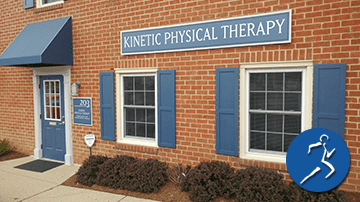There are many benefits of physical therapy for diabetes patients. A therapist can help people with diabetes get their life back. During treatment, patients learn how to participate in safe, effective exercise programs. The goal is improving a patient’s ability to move, perform daily activities, reduce pain, and hopefully lower blood glucose levels. Furthermore, PT treatment can even help people with diabetes heal associated skin problems faster than those without treatment. Here is some information regarding diabetes and the specific program a physical therapist may employ to help patients recover.
What is Diabetes?
Diabetes is a disease in which the body does not produce, or properly use insulin. Insulin is a hormone produced by the pancreas that allows glucose or sugar to enter cells and provide the necessary energy for daily activities. However, if the pancreas doesn’t produce enough insulin, or if the body doesn’t adequately respond to insulin, the result is a build-up of excessive amounts of glucose in a person’s blood. Therefore creating a toxic situation for cells throughout the body. Additionally, because the cells do not access the glucose for energy, they use excessive amounts of fat and become undernourished. If left untreated diabetes will then contribute to a wealth of other health conditions in the body as well.
Causes and Symptoms of Diabetes
Although the exact cause of diabetes is unknown, factors such as poor diet, obesity, and lack of exercise play essential roles in developing certain types of diabetes. In addition, some of the symptoms of diabetes include:
- Slow-healing sores
- High blood pressure
- Frequent infections, such as gum or skin infections and vaginal or bladder infections
- Increased thirst
- Frequent urination
- Constant or extreme hunger
- Fatigue
- Sweating
- Tingling, burning, or numbness in feet and hands
- Blurred vision
- Pain in joints or muscles
- Cramping in the legs when walking
- Pain or walking with a limp
- Weakness
- Chronic pain
The Effects and Complications of Diabetes
First and foremost, diabetes can affect any person at any age. The disease is known to contribute to other physical problems such as weakness, reduced endurance, obesity, balance issues, all of which may result in a sedentary lifestyle. Other complications include:
- Heart disease
- Heart attack
- Stroke
- High blood pressure
- Retinopathy or eye disease
- Vision problems
- Blindness
- Kidney disease
- Neuropathy (nervous system disease)
- Foot and hand pain
- Inner-ear nerve damage, which causes balance problems
- Peripheral vascular disease
- Reduced muscle strength and physical function
- Kidney disease
- Skin problems, including sores, ulcers, and infections
- Cell death, particularly in toes and feet
- Amputations
How Physical Therapy Helps
Your physical therapist will evaluate your specific case, thus creating a unique program to address your symptoms. First, treatment starts with a complete examination and assessment of your strength, flexibility, endurance, and balance. Next, the therapist will develop a program that includes the elements of motion, strength, flexibility, endurance, plus stability and coordination. The primary goal is addressing pain, increasing mobility, and reducing blood glucose levels. Furthermore, he can develop a protocol that can be followed at home to encourage a dynamic lifestyle and improve professional activities.
Reclaim Your Life
Contact Kinetic Physical Therapy today for your evaluation. There are many benefits of physical therapy for diabetes patients. Allow us to create your customized program addressing your unique needs. Don’t let a diabetes diagnosis stop you from living a healthy active lifestyle. Kinetic PT can help!




Leave a Reply
You must be logged in to post a comment.